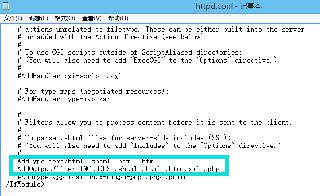Python中移除List重復(fù)項(xiàng)的五種方法
本文列些處幾種去除在Python 列表中(list)可能存在的重復(fù)項(xiàng),這在很多應(yīng)用程序中都會(huì)遇到的需求,作為程序員最好了解其中的幾種方法 以備在用到時(shí)能夠?qū)懗鲇行У某绦颉?/p>方法1:樸素方法
這種方式是在遍歷整個(gè)list的基礎(chǔ)上,將第一個(gè)出現(xiàn)的元素添加在新的列表中。
示例代碼:
# Python 3 code to demonstrate # removing duplicated from list # using naive methods # initializing listtest_list = [1, 3, 5, 6, 3, 5, 6, 1]print ('The original list is : ' + str(test_list)) # using naive method# to remove duplicated # from list res = []for i in test_list: if i not in res:res.append(i) # printing list after removal print ('The list after removing duplicates : ' + str(res))
→ 輸出結(jié)果:The original list is : [1, 3, 5, 6, 3, 5, 6, 1]The list after removing duplicates : [1, 3, 5, 6]
方法2:列表解析式這種方式實(shí)際上是第一種方法的簡(jiǎn)化版,它利用列表解析式,使用一行代碼就可以替代上面的循環(huán)方式。
示例代碼:
# Python 3 code to demonstrate # removing duplicated from list # using list comprehension # initializing listtest_list = [1, 3, 5, 6, 3, 5, 6, 1]print ('The original list is : ' + str(test_list)) # using list comprehension# to remove duplicated # from list res = [][res.append(x) for x in test_list if x not in res] # printing list after removal print ('The list after removing duplicates : ' + str(res))
→ 輸出結(jié)果:The original list is : [1, 3, 5, 6, 3, 5, 6, 1]The list after removing duplicates : [1, 3, 5, 6]
方法3:使用set()這種方式是最流行的方法來去除列表中的重復(fù)元素。但該方法的最大的一個(gè)缺點(diǎn)就是使用過后列表中元素的順序不再繼續(xù)保持與原來一致了。
示例代碼:
# Python 3 code to demonstrate # removing duplicated from list # using set() # initializing listtest_list = [1, 5, 3, 6, 3, 5, 6, 1]print ('The original list is : ' + str(test_list)) # using set()# to remove duplicated # from list test_list = list(set(test_list)) # printing list after removal # distorted orderingprint ('The list after removing duplicates : ' + str(test_list))
→ 輸出結(jié)果:The original list is : [1, 5, 3, 6, 3, 5, 6, 1]The list after removing duplicates : [1, 3, 5, 6]
方法4:利用列表解析式 + enumerate()該方法是在列表解析式的基礎(chǔ)上利用枚舉來去除重復(fù)元素。通過檢查元素是否已經(jīng)在列表中存在從而將其略過。這種方法可以保持列表中的元素順序不會(huì)改變。
示例代碼:
# Python 3 code to demonstrate # removing duplicated from list # using list comprehension + enumerate() # initializing listtest_list = [1, 5, 3, 6, 3, 5, 6, 1]print ('The original list is : ' + str(test_list)) # using list comprehension + enumerate()# to remove duplicated # from list res = [i for n, i in enumerate(test_list) if i not in test_list[:n]] # printing list after removal print ('The list after removing duplicates : ' + str(res))
→ 輸出結(jié)果:The original list is : [1, 5, 3, 6, 3, 5, 6, 1]The list after removing duplicates : [1, 5, 3, 6]
方法5:利用collections.OrderedDict.fromkeys()這是完成特殊任務(wù)中最快的方法。它先是將列表中的重復(fù)項(xiàng)移除并返回一個(gè)字典,最后轉(zhuǎn)換成列表。這種方法對(duì)于字符串也可以進(jìn)行處理。
示例代碼:
# Python 3 code to demonstrate # removing duplicated from list # using collections.OrderedDict.fromkeys()from collections import OrderedDict # initializing listtest_list = [1, 5, 3, 6, 3, 5, 6, 1]print ('The original list is : ' + str(test_list)) # using collections.OrderedDict.fromkeys()# to remove duplicated # from list res = list(OrderedDict.fromkeys(test_list)) # printing list after removal print ('The list after removing duplicates : ' + str(res))
→ 輸出結(jié)果:The original list is : [1, 5, 3, 6, 3, 5, 6, 1]The list after removing duplicates : [1, 5, 3, 6]
方法6:處理嵌套列表中的重復(fù)元素對(duì)于多維列表(列表嵌套)中的重復(fù)元素去除。這里假設(shè)列表中元素(也是列表)它們具有相同的元素(但不一定順序相同)都被當(dāng)做重復(fù)元素。那么下面使用 set() + sorted() 方法來完成任務(wù)。
示例代碼:
# Python3 code to demonstrate# removing duplicate sublist # using set() + sorted() # initializing listtest_list = [[1, 0, -1], [-1, 0, 1], [-1, 0, 1], [1, 2, 3], [3, 4, 1]] # printing original listprint('The original list : ' + str(test_list)) # using set() + sorted()# removing duplicate sublistres = list(set(tuple(sorted(sub)) for sub in test_list)) # print resultprint('The list after duplicate removal : ' + str(res))
→ 輸出結(jié)果:The original list : [[1, 0, -1], [-1, 0, 1], [-1, 0, 1], [1, 2, 3], [3, 4, 1]]The list after duplicate removal : [(-1, 0, 1), (1, 3, 4), (1, 2, 3)]
也可以利用 set() + map() + sorted()
示例代碼:
# Python3 code to demonstrate# removing duplicate sublist # using set() + map() + sorted() # initializing listtest_list = [[1, 0, -1], [-1, 0, 1], [-1, 0, 1], [1, 2, 3], [3, 4, 1]] # printing original listprint('The original list : ' + str(test_list)) # using set() + map() + sorted()# removing duplicate sublistres = list(set(map(lambda i: tuple(sorted(i)), test_list))) # print resultprint('The list after duplicate removal : ' + str(res))
→ 輸出結(jié)果:The original list : [[1, 0, -1], [-1, 0, 1], [-1, 0, 1], [1, 2, 3], [3, 4, 1]]The list after duplicate removal : [(-1, 0, 1), (1, 3, 4), (1, 2, 3)]
到此這篇關(guān)于Python中移除List重復(fù)項(xiàng)的五種方法的文章就介紹到這了,更多相關(guān)Python 移除List重復(fù)項(xiàng) 內(nèi)容請(qǐng)搜索好吧啦網(wǎng)以前的文章或繼續(xù)瀏覽下面的相關(guān)文章希望大家以后多多支持好吧啦網(wǎng)!
相關(guān)文章:
1. jsp文件下載功能實(shí)現(xiàn)代碼2. jsp實(shí)現(xiàn)登錄驗(yàn)證的過濾器3. 如何在jsp界面中插入圖片4. ASP動(dòng)態(tài)網(wǎng)頁制作技術(shù)經(jīng)驗(yàn)分享5. 詳解瀏覽器的緩存機(jī)制6. .Net Core和RabbitMQ限制循環(huán)消費(fèi)的方法7. Xml簡(jiǎn)介_動(dòng)力節(jié)點(diǎn)Java學(xué)院整理8. phpstudy apache開啟ssi使用詳解9. JSP之表單提交get和post的區(qū)別詳解及實(shí)例10. .Net加密神器Eazfuscator.NET?2023.2?最新版使用教程

 網(wǎng)公網(wǎng)安備
網(wǎng)公網(wǎng)安備